Your hamstrings feel like steel cables–can this cause knee pain?
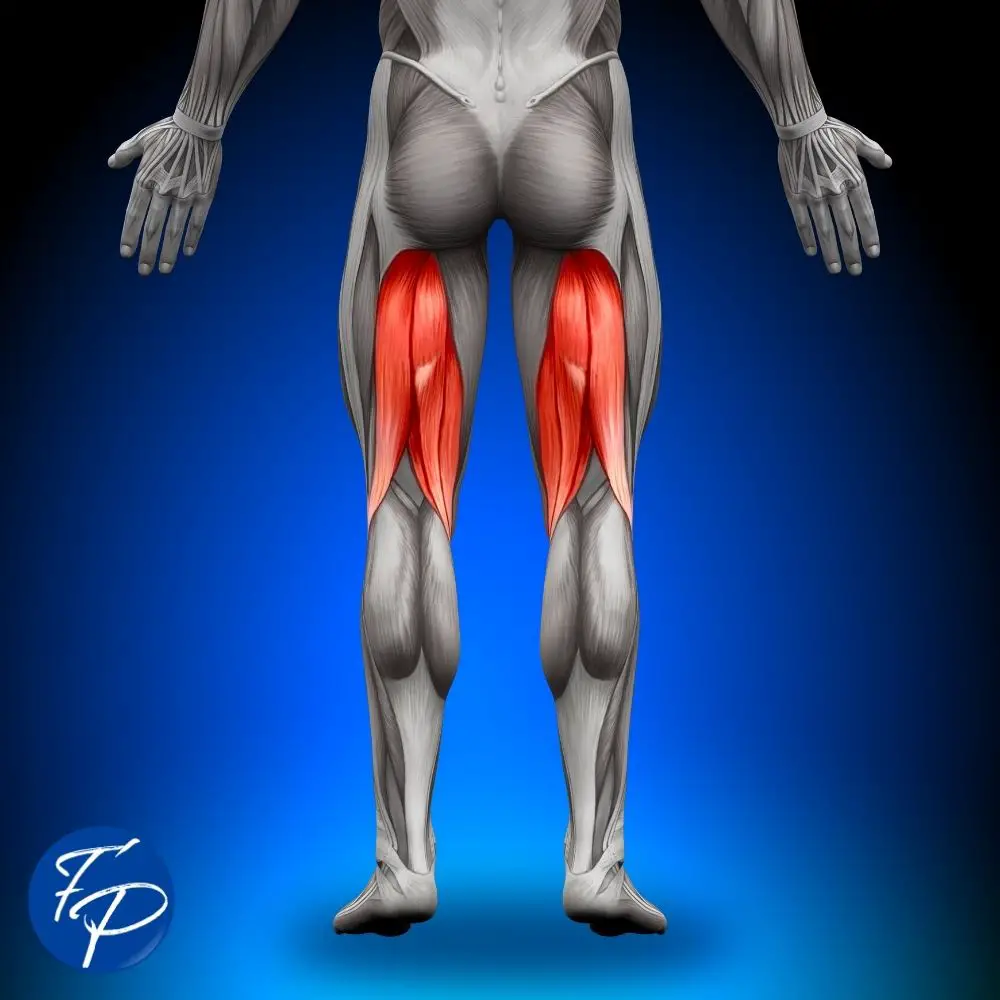
Here’s the short answer: tight hamstrings can contribute to knee pain…but it’s rare.
In this article you’ll learn 5 reasons hamstring tightness probably isn’t causing your knee pain, and 3 signs your pain is from your hamstrings. Plus, I’ll show you 5 ways to mobilize and strengthen your hamstrings.
5 Reasons You Shouldn’t Blame Your Hamstrings
It’s probably not your hamstrings’ fault. Here’s why:
1) Your Hamstrings Aren’t Tight
Most patients who complain of tight hamstrings actually have normal hamstring mobility. The people obsessed with loosening their hamstrings tend to be more flexible than those who don’t know or don’t care about their flexibility.
Try the 90-90 Hamstring Mobility Test to assess your hamstring flexibility:
Lay on your back and grab the back of your knee. Straighten your knee as far as possible. Is your knee straight? Have a friend take a picture from the side, or visualize the angle in a mirror.

If you can get the knee within 20-30 degrees of straight, your hamstrings aren’t tight (1). In this picture my knee is about 25 degrees from fully extended; my hamstring mobility is normal.
If your shin is barely past parallel from the ground, you have some stretching to do!
2) Hamstrings are a Scapegoat
Or an escape-goat if you’re Michael Scott. I feel sorry for the hamstrings. They’re one of the most hated muscle groups in the body.
Tight hamstrings get blamed for everything: low back pain, hip pain, knee pain, the common cold. (Okay maybe not that last one, but you get the idea!)
You’d think hamstring stretches would cure every ache and pain. They don’t.
If your hamstring range of motion is restricted (based on the 90-90 test above), go ahead and stretch them. Otherwise, it’s a waste of time. Here’s why I don’t stretch my hamstrings.
Feeling muscle tightness doesn’t correlate well with objective muscle stiffness (2). Muscles feel tight from being used beyond their capabilities.
Maybe your hamstrings aren’t tight.
Maybe your hamstrings are weak.
What’s the solution?
Strengthen your hamstrings! The Nordic Hamstring Exercise (described later) is proven to lengthen the hamstrings and cut injury risk in half–the best of both worlds! (3, 4)
On the other hand, stretching weak muscles will hamstring your progress.
3) Your Sciatic Nerve is Sensitive
Your sciatic nerve originates in your low back and runs directly behind your knee, carrying nerve supply to your leg. Sciatic nerve irritation causes pain and tightness along the hamstrings and behind the knee. This is called “adverse neural tension.”
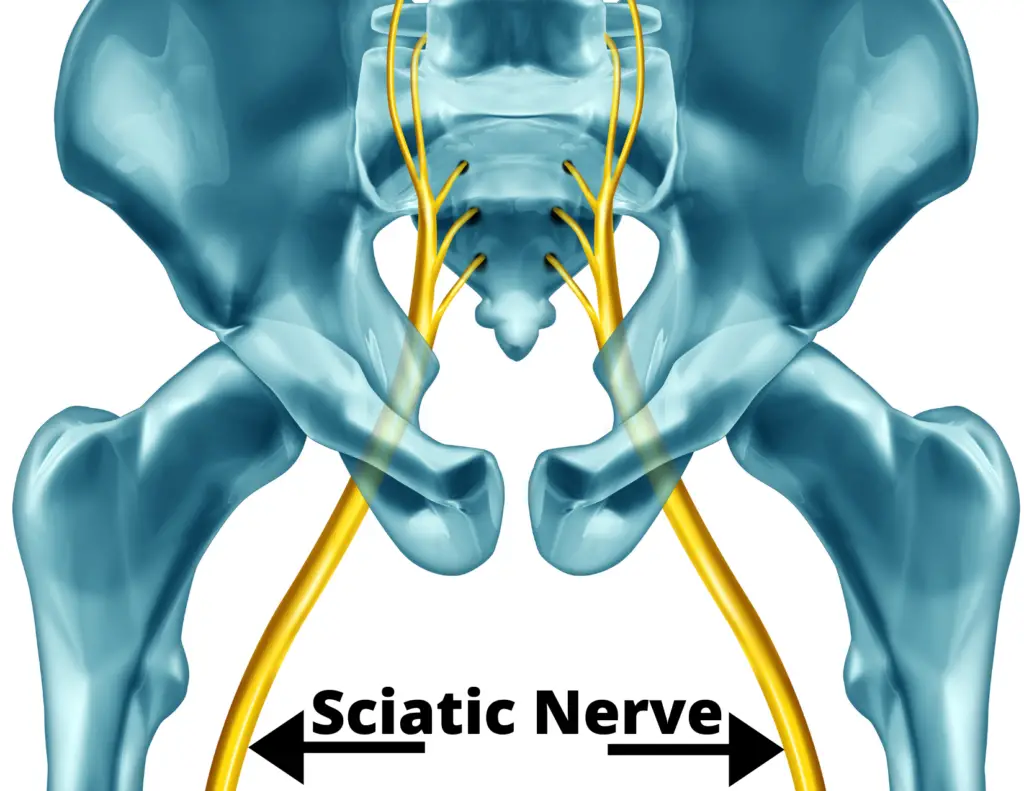
The hamstrings tighten as a protective response to guard the nerve. Nerves are valuable tissue and take a long time to heal if they’re injured. Our brain knows this and deploys less-valuable muscles to protect irritated nerves.
You can stretch your hamstrings all day, but if you don’t relieve the nerve irritation, muscle tension will return quickly. Sciatic nerve glides (Exercise 7 in this article) calm down nerve irritation, which in turn relaxes the “on-guard” hamstrings.
Physical therapists use the Slump Test to check for sciatic nerve tension:

Sit on a chair or bench and slouch, with your worst posture possible. (Your PT will never ask you to do this again!) Straighten your knee and pull your toes up. Then, drop your chin to your chest.
Repeat on the other side and compare. This position tensions the sciatic nerve–more pain or stretching on one leg indicates nerve irritation. It’s normal to feel symmetrical stretching behind the knees.
If your calf muscles feel chronically tight, too, the sciatic nerve may be to blame. Sciatic nerve pain often stems from a pinched nerve in the lower back.
4) Other Sources of Knee Pain are More Common
Odds are, your knee pain is from one of the common conditions that cause knee pain on the stairs. Spoiler alert: Hamstring tightness didn’t make the list. Anterior knee pain, knee cap pain and knee arthritis aren’t caused by tight hamstrings.
5) Pain is Multifaceted
Pain is not a simple cause-and-effect (5). It depends on a host of factors, including environment, tissue damage, stress, sleep, nutrition, etc.
Ever seen a toddler fall down and not know whether to cry? He looks to his nearby parent for cues before deciding how to react.

Like the child’s reaction, our pain experience depends on factors beyond irritation or damage at the tissue. Pain is rarely caused by just one thing, and our mind plays a powerful role in how we handle pain.
Not convinced? Read this incredible book:

It will transform how you understand pain and your physical limitations.
It’s unlikely your knee pain is caused by tight hamstrings. However, (like mom always said) you may be the rare exception.
Let’s review hamstring anatomy before exploring the 3 signs the hamstrings are causing knee pain.
Hamstring Anatomy
The hamstrings are a group of 3 muscles that flex the knee joint and extend the hip joint. They’re located on the back of the leg and work opposite your hip flexors and quadriceps muscles.
Knee flexion involves bending your knee–think of kicking your butt with your heel. Hip extension involves kicking your upper leg behind you or standing up from a bend-over position.

The semimembranosus and semitendinosus muscles attach from your sit bone (ischial tuberosity) to the inside of your knee, just below the joint. The biceps femoris muscle spans from the ischial tuberosity and thigh bone to the outside of the lower leg below the knee.
These three muscles work together to bend the knee, extend the hip and stabilize the knee. Strong hamstrings reduce the risk of hamstring tears and ACL injuries (6).
3 Signs Your Hamstrings are Causing Knee Pain
Hamstring problems cause knee pain on rare occasions. Here’s how it can happen:
1) Trigger Points
Trigger points are taut, tender, palpable bands in the muscle (7). They can send pain to other areas of the body.
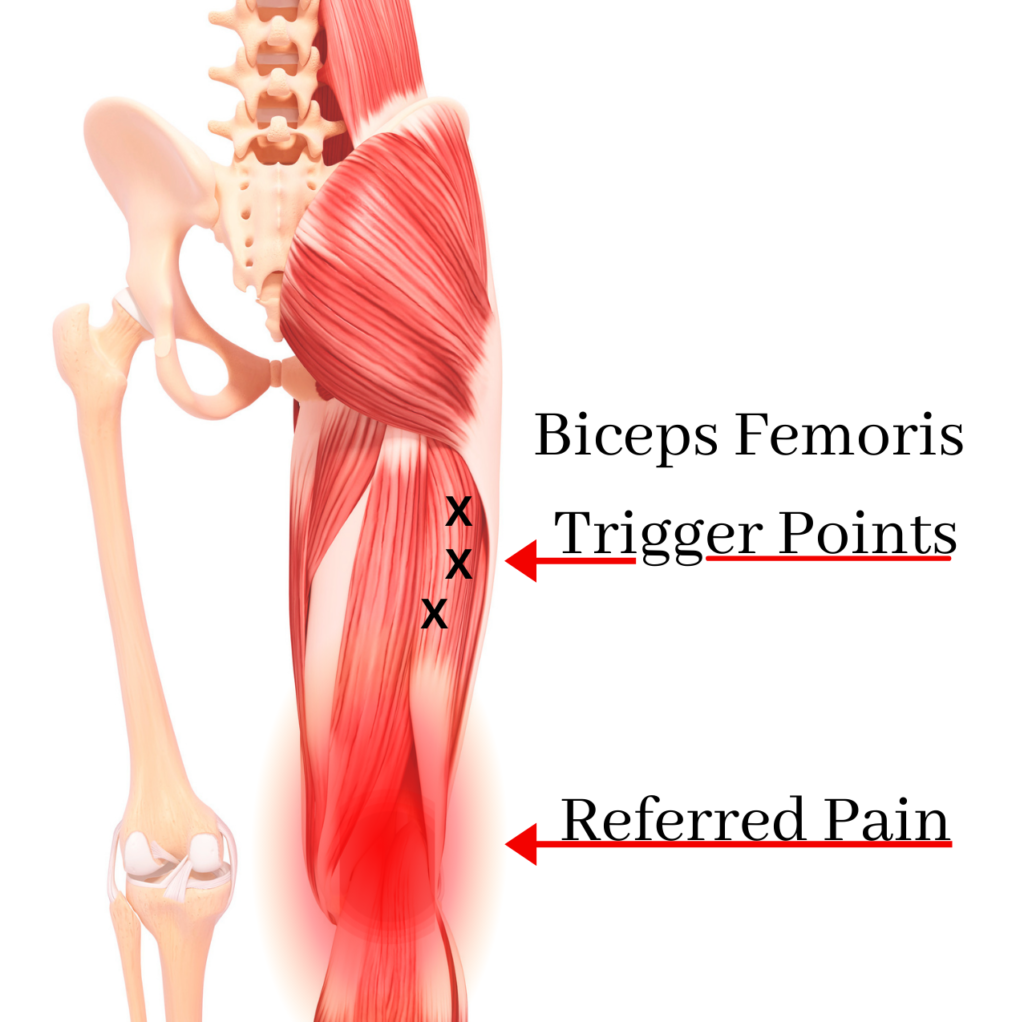
Trigger points in the biceps femoris, the lateral hamstring muscle, refer pain to the back of the knee.
2) Hamstring Strain
If you felt a pop or a pull in your hamstring when running from a wild animal (or, let’s be honest, sprinting after the ice cream truck), the back of your knee might hurt.
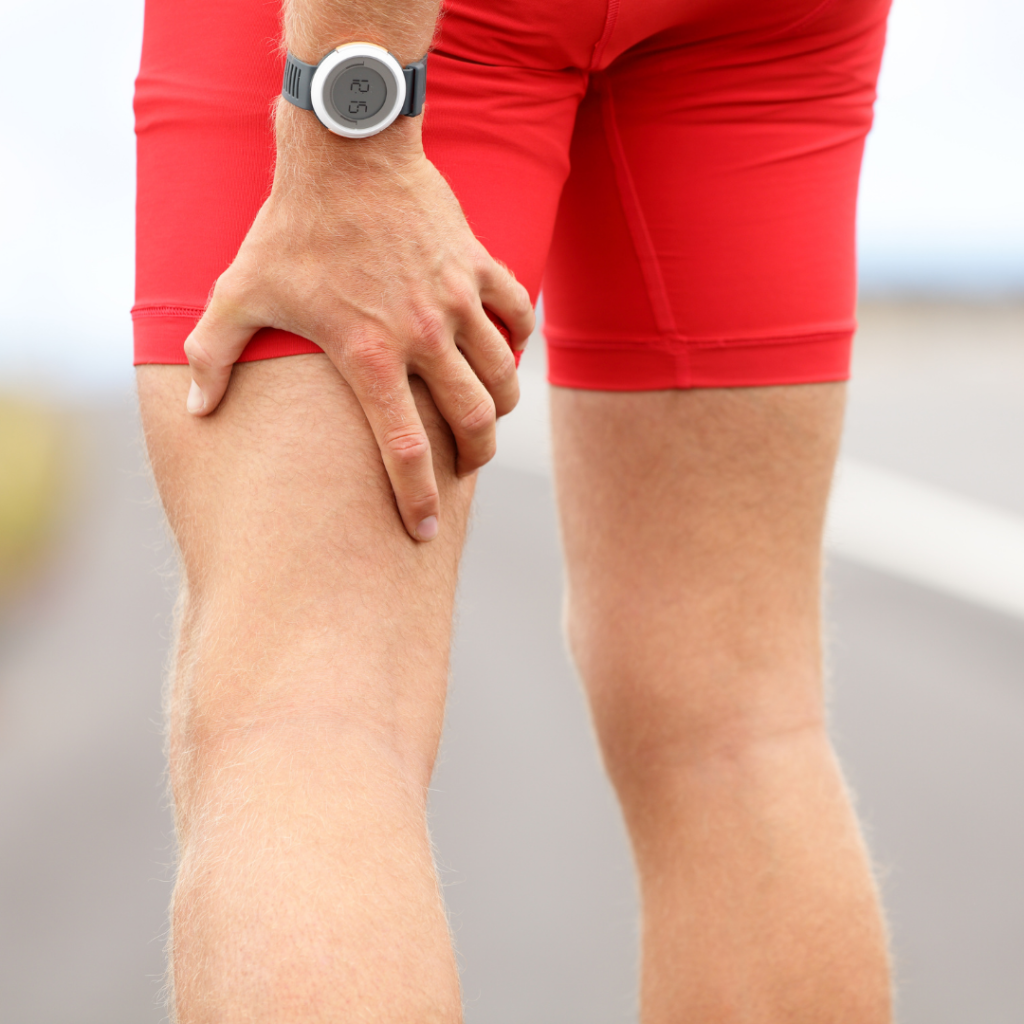
It’s also normal to notice bruising, swelling, and discoloration in the back of the thigh after a hamstring muscle injury.
3) Hamstring Tendon Pain
Tendon pain, also called hamstring tendonitis or tendinopathy, occurs directly at the tendon.

If you have pinpoint knee pain at the medial or lateral hamstring tendons, your pain may be hamstring-related.
Hamstring Mobility
If your hamstrings are truly tight (based on the 90/90 test), these two techniques will improve your flexibility.
If you’re already flexible, I don’t recommend stretching more unless your sport requires extreme mobility (e.g. gymnastics, cheer, figure skating).
1) Standing Hamstring Stretch
Put your heel on a chair or bench with your leg straight. Hinge at your hips, keeping your lumbar spine flat.

Avoid flexing your back forward, which will stretch your lower back more than your hamstrings–not the objective here. Research supports stretching for three sets of 30 seconds to increase flexibility (8).
2) Seated Hamstring Release
This technique reduces muscle tone and alleviates tender spots in the hamstrings. It’s a powerful treatment for trigger points in the biceps femoris, which cause posterior knee pain.
Sit on a firm chair or bench. Place a lacrosse ball under your thigh on the sore spot. Slowly bend and straighten your knee, using the ball to mobilize the soft tissues in the back of your thigh.
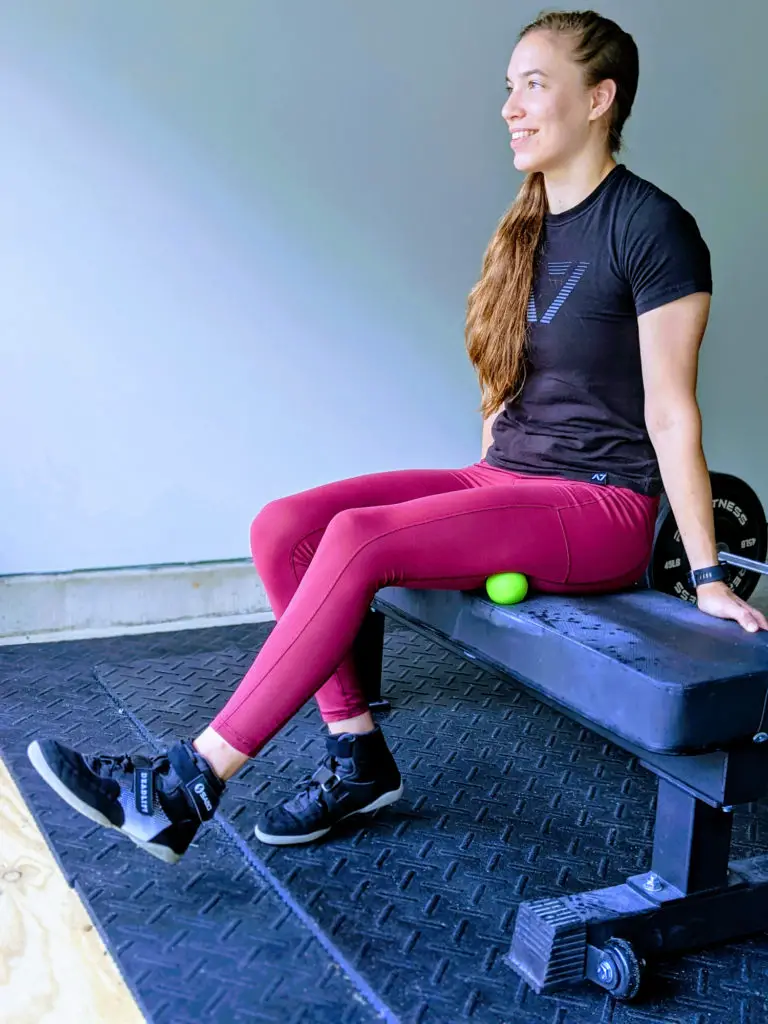
Mild to moderate discomfort is normal, but don’t push yourself into extreme pain.
A foam roller can also work for this exercise, but I prefer a lacrosse ball for more precision:

Fun fact: this exercise acts primarily on the nervous system to reduce muscle tone and tension (9).
Hamstring Strength
Strengthening the hamstrings will simultaneously reduce injury risk and increase muscle length (3, 4). A sensation of tightness is often muscle weakness masquerading as stiffness.
In that case, hamstring strengthening is the best treatment option–try one of these 3 exercises:
1) Romanian Deadlifts
The hamstrings help extend the hips, so exercises like deadlifts and Romanian deadlifts build up the hamstrings’ hip extension strength.

Using a barbell or dumbbells, stand up tall holding the weight in front of you. Keep the knees slightly bent throughout the exercise.
Push your hips backwards and keep your low back straight. Lower the weight until it’s even with your shins, then slowly return starting position. It’s normal to feel the hamstrings stretch at the bottom of the movement.
Solid technique and high repetitions enhance this exercise: 2 sets of 15-20 reps is a good starting point.
2) Hamstring Eccentric Sliders
This exercise emphasizes eccentric hamstring strength. (The eccentric part of an exercise is when the muscle lengthens, like the lowering phase of a biceps curl.) During this exercise, the hamstrings contract to slow the straightening of the knee.

Start lying on your back with your feet under your knees. Lift your hips as high as you can, and slowly slide your feet away from you, controlling the descent with your hamstrings. Once the hips reach the floor, slide your feet back to the starting position and repeat.
Your hamstrings will be on fire after 10-20 reps!
3) Nordic Hamstring Curls
Grab a partner and a foam pad to kneel on–this will be fun! Nordic hamstring curls lengthen the hamstring muscles and are proven to reduce athletes’ hamstring injury risk by 50% (4).
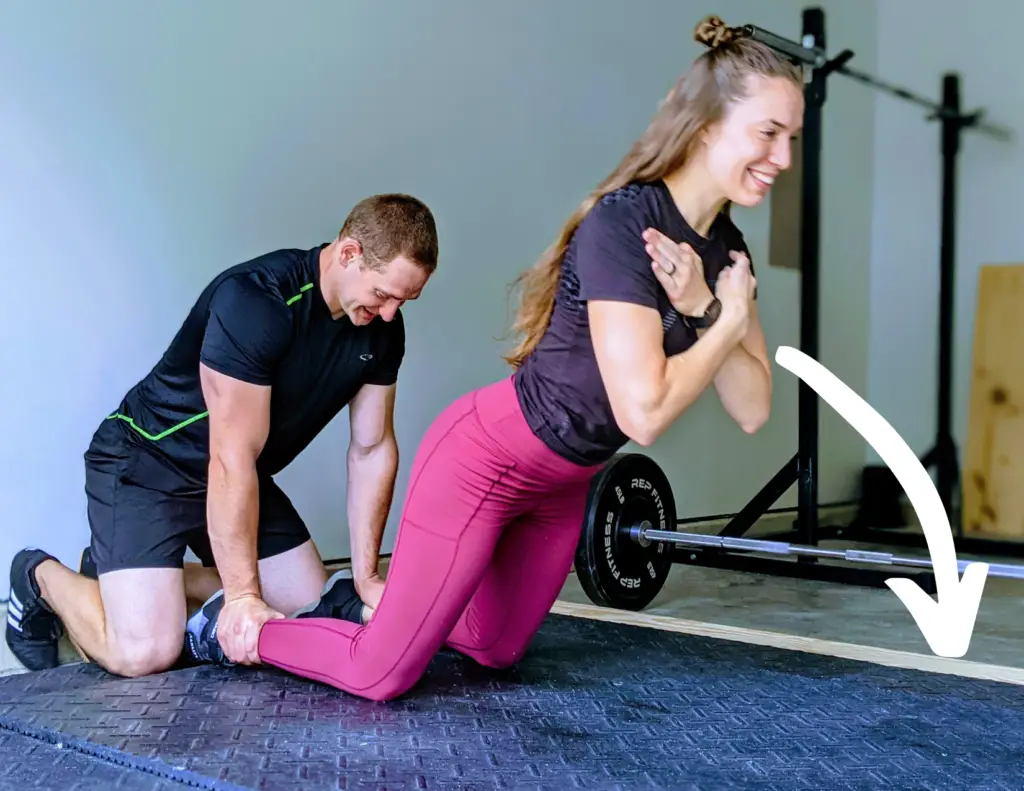
Start in tall kneeling and slowly lower your chest towards the floor. Avoid hinging at your hips. Keep your hands in front of you so you can catch yourself–it’s a major feat of strength to lower yourself all the way to the floor!
Repeat until your hamstrings fatigue–it won’t take long!
Summary
Your knee problems probably aren’t caused by tight hamstrings–knee pain is more frequently from other sources. However, trigger points, tendon pain, or recent hamstring injury cause hamstring-related knee pain.
If you’re dealing with hamstring issues or knee pain, make an appointment with your local physical therapist. Physical therapy is an effective treatment for most types of knee pain–hamstring-related or not. Your PT will assess your knee and create a custom treatment plan so you can get back to the activities you love.
Do you stretch your hamstrings? Let me know in the comments!
Looking for more science-based health tips? Join the free, fast-growing Facts & Physio Newsletter. Plus, get The Recovery Checklist when you sign up.

